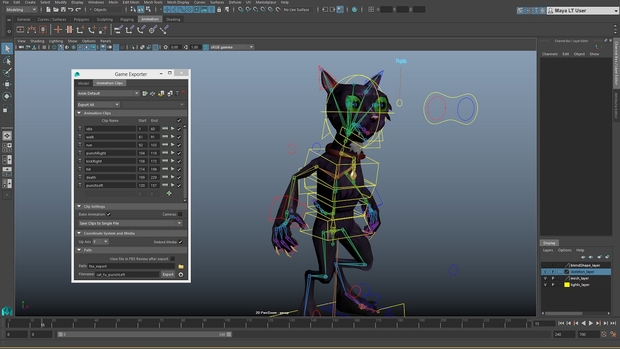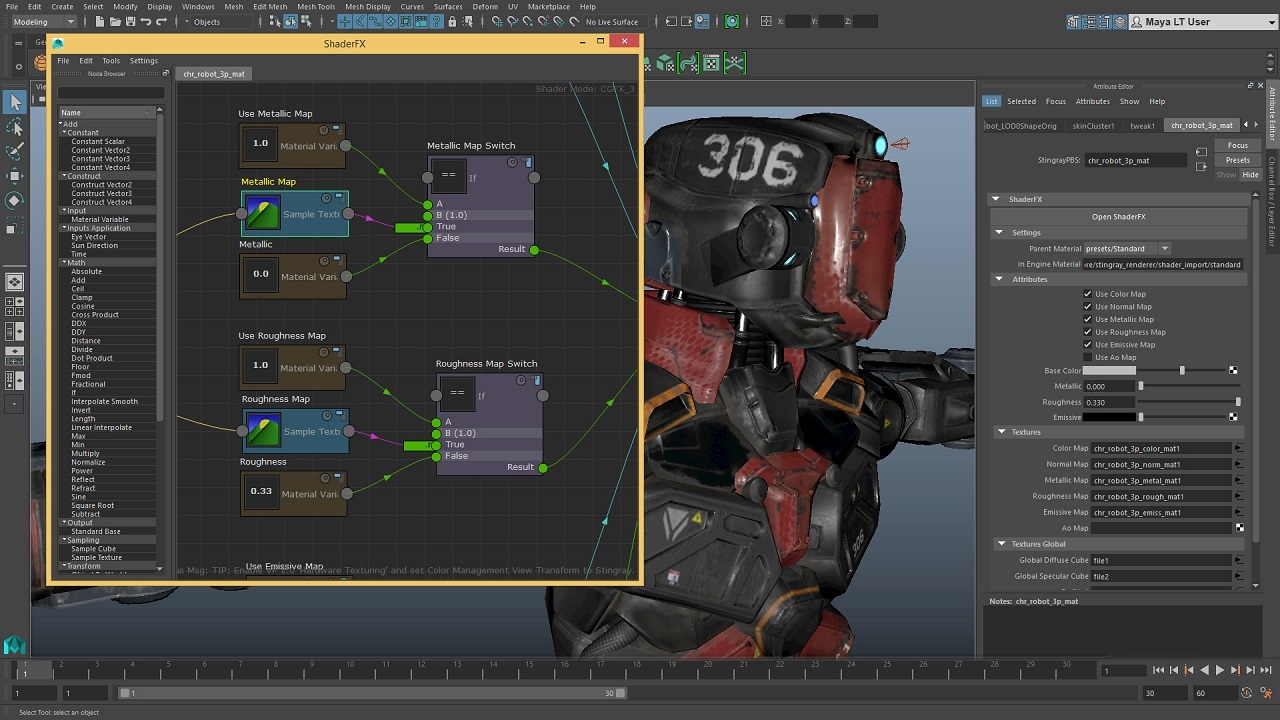The American multinational software corporation known as Autodesk recently announced that the company will be previewing its new Stingray Game Engine during the Games Developers Conference (GDC) 2015 in San Francisco this week. The information comes after news broke about a competing product called Unreal Engine being available now to all developers for free (plus some royalties). Unity will also be at GDC this year, putting all three companies vying for developer attention at the same time as the virtual reality marketplace starts to take off.
See also: Now FREE to all Developers, Could Unreal Engine Become the New Standard for VR?
Details are still sparse at this point in time in regards to the Stingray game engine. This is because Autodesk is planning to make an official announcement on Wednesday, March 4, from 3:30pm – 4:30 p.m. in the Moscone Convention Center, West Hall, Room 3003. So far, they have teased the public with a cryptic, static filled video which can be seen below. Besides that, Autodesk has only put up a handful of additional details on a simple webpage which already allows people to apply for beta access ahead of the release.
The goal of Stringray as the promo page states “is to build a truly modern and flexible 3D game engine. By combining a completely data-driven rendering pipeline with powerful, easy-to-use game creation tools, Stingray is going to change the way 3D games are made.”
The core of the system as reported by the Animation World Network is built from the technology behind the C++ Bitsquid engine that Autodesk acquired last summer. By introducing a game engine, Autodesk can offer game makers a more complete game creation workflow from concept to release. With this integrated into the other design tools that Autodesk has to offer, the Stringray platform could potentially allow designers to better contextualize their ideas.
The technical preview at GDC will highlight several core areas of focus that make it easier for game makers of every level create the next generation of blockbusters. Autodesk will give a live demonstration of several key advances it has made in Stingray such as:
- Simultaneous Platform Deployment: A live link between Stingray and multiple target devices allows game designers to evaluate their games simultaneously on multiple platforms
- Integrated Workflow: A more efficient pipeline to export 3D content
- Modern Data-Driven Architecture and Powerful Rendering Capabilities: A data-driven core architecture makes it easier for a user to change the look of a game without having to rewrite and re-compile the engine.
The announcement of Stringray comes along with the release Maya LT 2016. Maya LT is essentially a stripped down version of Maya, hence the LT (light) tag. Maya LT 2016 will also be set at a massively reduced price tag with a monthly subscription option. Both Stringray and Maya LT are aimed at the indie game market hoping to get developers to use Autodesk products rather than other competing platforms like Unity and Unreal.
The new Maya LT release includes:
- Integrated Sculpting Tools and UV editing tools: Brush-based sculpting in Maya LT now facilitates high level sculpting on models, without the need to export to a different tool, while new UV brushes (interactive cut/sew edge tool, automatic projection, pinning, weld, split, and unfold brushes) provide an intuitive, artistic-driven workflow.
- Advanced Animation and Game Exporter Tool: New Spline IK and cluster deformation help users easily animate non-humanoid characters; a Game Exporter update simplifies the management and export of multiple animation clips, making it easier for indie artists to export multiple animations for use in a game engine simultaneously.
- Physically-Based ShaderFX Nodes and user-submitted improvements: Physically-based shading material allows artists to design more realistic and high quality materials, for higher-quality assets. User submitted enhancements include background texture loading, allowing artists to begin working without waiting for an entire scene to load; a customizable default lighting environment that standardizes the appearance of imported assets; a fog effects in the viewport to focus on the object closest to the viewport camera.
- Creative Market content storefront: Last year, Autodesk acquired Creative Market – an online content marketplace serving more than 690,000 artists and designers. On March 26, Maya LT users will be able to purchase 3D content from a dedicated content landing page curated specifically for game makers. Users can visit the page directly from within the Maya LT app or by visiting: https://creativemarket.com/apps/mayalt
There has already been one partner that has said publicly that they are working with Autodesk’s Stingray Game Engine. That company is Fatshark Games who has created a variety of games in the past. Martin Wahlund, CEO of Fatshark, stated that they “are excited to announce that [they] are actually using the new Stingray engine to build our upcoming ‘Warhammer: End Times – Vermintide’ game.” – which is a first person action game based in a time where the era of mortals is ending, and the reign of Chaos draws ever closer. The experience will include multi-player capabilities and will be available for PC, Xbox One, PS4.
Although the Stingray engine is not specifically described as being directly involved with the VR content creation process, the software platform should have an advantage in 3D character animation compared to Unity and Unreal. That is at least if another Autodesk product called Motionbuilder is used with during the development process. As the Motionbuilder product pages states, the software package allows developers to “more efficiently manipulate and refine data with greater reliability.” They can “capture, edit, and play back complex character animation in a highly responsive, interactive environment, and work with a display optimized for both animators and directors.”
It is still unclear if developers will make the switch from Unity or Unreal and begin working with the Autodesk development suite for VR. However, the capabilities of Maya LT look promising and the Stringray engine should provide additional features as well. Also, it must be mentioned that the history of Autodesk and virtual reality is a strong one. Autodesk has been involved in VR since the late 1980’s when another VR pioneer named VPL Research and Autodesk publicly demonstrated the first commercial VR systems all the way back on June 7, 1989 – which was dubbed “Virtual Reality Day.” Autodesk had their “Cyberspace” project being developed which attracted visits from people all across the globe including William Gibson, science-fiction author of the popular book Neuromancer. The Cyberspace project also got endorsement of the 60’s guru Timothy Leary as well, keeping Autodesk’s influence in VR spanning over the last few decades.[1] [2]
With a long standing relationship with VR, it makes sense that Autodesk would would want to get developers working with their products as virtual reality headsets like the Oculus Rift and HTC Vive start hitting the market. Whether or not the developers will create VR experiences with the Stingray game engine is still yet to be determined.
For more information about what Autodesk is doing at GDC this year, visit their dedicated webpage.


























